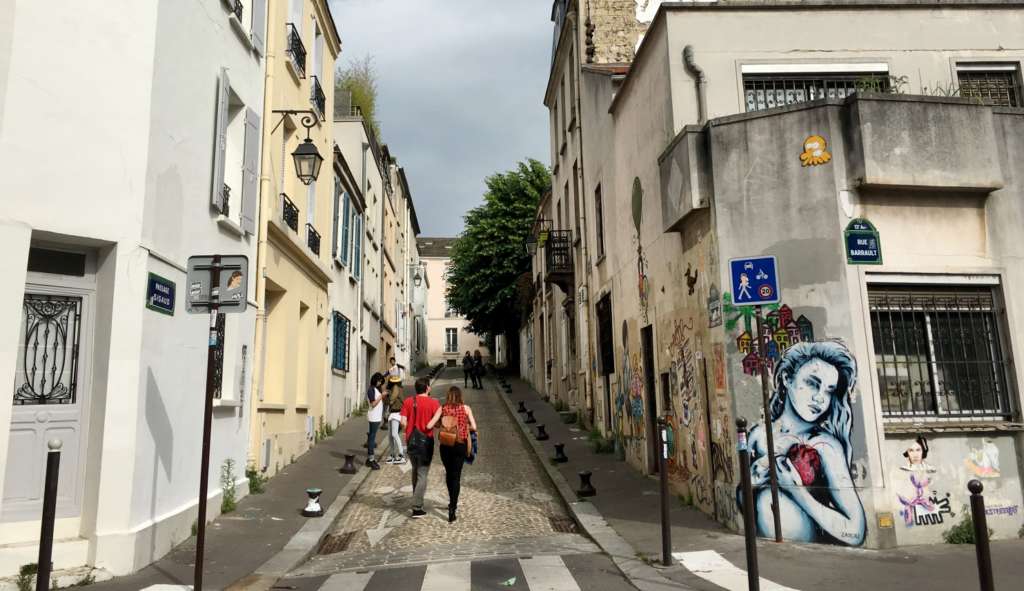Paris- Within few months, the arrondissement 13 in Paris has turned into an outdoor art gallery. The walls of its buildings feature large-sized paintings of different artistic styles. The arrondissement located to the southeast of Paris includes a bouquet of old residential neighborhoods, surrounding the Square of Italy “Place de l’Italie” facing the municipality building. It includes many hospitals including “Hôpital de la Pitié” established 600 years ago, in which Princess Diana Spencer died 20 years ago.
Given that the neighborhood includes many residential towers, officials from the municipality saw it is better to assign street painters to decorate the window-free side walls with colored paintings that harmonize with the public modern life, instead of leaving them for the chaos of graffiti painters who distort the facades and cost the municipality big sums to remove them. Although graffiti has become a recognized type of art in the world’s biggest cities, many street artists spread their decorative but illegal graffiti without the municipalities’ authorizations. Those artists include Némo, Seth, and Miss Pejac.
Thousands of Parisians and tourists come, every day, to the arrondissement 13 aiming for delicious dishes at the Chinese, Thai, and Vietnamese restaurants. The arrondissement also includes the Chinatown neighborhood which lodges more than one million immigrants from the former French colonies in Asia.
In the past ten years, dozens of sushi restaurants was opened there by Chinese and not Japanese residents. And, of course, the neighborhood also saw the opening of many other restaurants serving Moroccan Couscous, Indian Tandoori, Turkish Shawarma, as well as places serving Lebanese, Ethiopian, Italian, and Spanish plates. So, anyone who walks in the arrondissement feels like home.
But why street art does invade a city like Paris known with famous classic museums and fine art galleries? According to experts, these new and contemporary arts respond widely to the expectations of wide categories of people and their interests.
Floors, sidewalks, and billboards also featured touches from different artists and tools used in this spontaneous creativity known as “street art”. Heroes of this art may not be familiar among the public, but they are definitely known among youths from specific categories. Therefore, over 20 foundations and companies work in this art promotion and organize visits for people aiming to see it. Although some of these street artworks may be drawn without the municipalities’ permission, many others are executed at the request of the municipalities and building owners.
The painting of those massive mural drawings first emerged with the Galerie Itinerrance ran by an Arab artist called Mehdi Ben Cheikh and in cooperation with the municipality of arrondissement 13. This art turned into a sort of fever. The neighborhood’s residents wake up every day to see new paintings. New works appeared over the past two months on the wall of the Metro 6 line. A night light system was also set to put the spotlight on these drawings.
Mayor Jérôme Coumet greets this phenomenon and encourages it. He sees that this wide neighborhood lacks classic museums, and needs another artistic scene to compensate for it. He considers the street art an alternative that secures a special artistic touch in the neighborhood.
For his part, Mehdi Ben Cheikh asserts that this new vital art has economic benefits and contributes in improving the neighborhood and promoting it. He considered that people who take the train are much more than those who visit classic museums. Those commuters have the chance to enjoy an outdoor gallery in their seats.
“It is a new Paris, full of vitality, youth spirit, and imagination,” he said.
Painter Théo Abramowitz used to cooperate with the most renowned museums in Paris including the Louvres and Musée d’Orsay. Yet, he quit his job and dedicated his talent for street art and for the promotion of those opendoor galleries.
Damian, too, was a British journalist who quit his job in London and moved to Paris to work in organizing weekly visits to the Parisian street art. Damian guides the visitors and gives them briefs on these works in both French and English languages.
